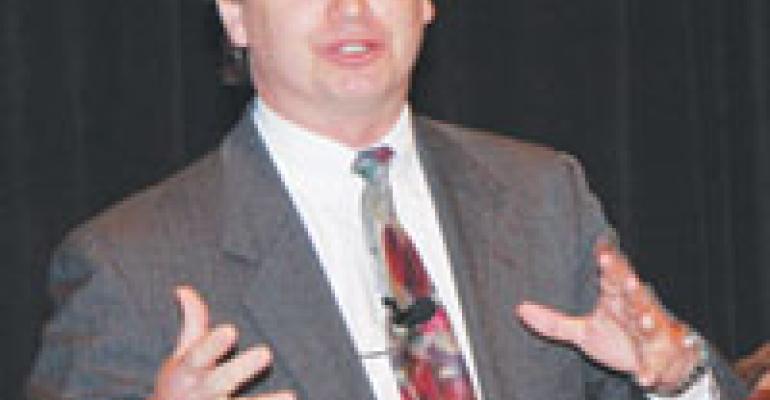Setting forth principles for innovative thinking in a spotlight presentation at The NAFEM 2009 Show in Orlando, Fla., Madison Mount, associate partner of IDEO, a Palo Alto, Calif.-based design firm, ticked off precepts like “strive for empathy,” “become comfortable with the uncomfortable” and “build to think.”
To illustrate striving for empathy, Mount told the crowd about an IDEO designer who voluntarily checked into a hospital emergency room to gain understanding about the patient experience for a project he was doing for a health care company. Becoming comfortable with the uncomfortable is about understanding the mood swings of innovation, Mount said.
“Every project starts out on a high note, but inevitably you get caught up in problems and lost in a fog,” Mount said. “But after a while, you get a good grasp of the questions and the solutions.”
Build to think means “don’t wait until you have the most perfect idea ever to build a prototype—build as early as possible in the process,” Mount said.
In the panel discussion that followed Mount’s speech, Jeff Cook, senior director of equipment development for Burger King Corp., gave his own manifesto on innovation: “Voltaire said, ‘The perfect is the enemy of the good.’ Do you think Microsoft would be around today if they waited until Windows was perfect before they licensed it? Not a chance.”
Cook urged would-be innovators to “fail fast,” citing the examples of short-lived products like the Burger King Baguette, the Arch Deluxe, Sony Betamax and New Coke.
“All of their companies thrived and survived through failure,” Cook said. “The reason is because they got in there, failed fast and moved on. A true innovator dares to stay in the game but knows when to get out. Don’t be afraid to fail fast, and if you don’t make mistakes, you’re not taking enough risk.”

